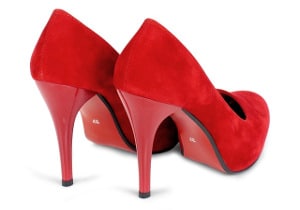All of these 3 words have the same pronunciation:
they’re /ðeər/
there /ðeər/
their /ðeər/
they’re, there and their are homophones. Homophones are words that are pronounced the same but have a different meaning and spelling.
This causes English learners to confuse these words and to make mistakes with them. In fact, even many native English speakers make mistakes writing these words.

In this lesson, you will learn:
- The definition and part of speech for each word.
- Clear examples of how to use each word.
If you understand the meaning and use of each word, then that will help write them correctly.
they’re
“they‘re” is the contracted form of “they are” (third person plural of the verb “to be”)
The apostrophe indicates that a letter is missing.
The missing letter is the letter “a” from the word “are”.
“they’re” is often used where the verb “to be” is acting as a main verb.
Examples:
Where are the keys?
They are in the kitchen. (full form)
They’re in the kitchen. (contracted form)
What colour are the shoes?

They are red. (full form)
They’re red. (contracted form)
“they’re” is also used where the verb “to be” is acting as an auxiliary (helping) verb. A common example is in the present continuous tense.
Examples:
What are the children doing?
They are playing in the garden. (full form)
They’re playing in the garden. (contracted form)
there
There has 2 common uses:
- An adverb of place
- An introducing subject
Let’s look at each use in more detail.
“there” as an adverb of place
When “there” is acting as an adverb of place, it means “to / at / in” that place
Examples:
The shop is closed. We will go there tomorrow.
Where do you want me to put the box?
Put it there please.
Where is the horse?
It’s over there.
“there” as an introducing subject
“there” can introduce the subject of the sentence.
“there is” – to introduce a singular subject (present)
Example:
There is a cup of coffee on the table.
“there are” – to introduce a plural subject (present)
Example:
There are some pizzas on the table.
their
“their” is a possessive adjective. A possessive adjective describes who owns or possesses something.
“their” is the possessive adjective for the third person plural.
Examples:
My parents have a house. Their house is in London.
(In this example, “their house” means the house of my parents.)
Why are Jane and Mark walking?
Their car has been stolen.
( “their car” is referring to the car owned by Jane and Mark.)
More English tutorials
TOO and ENOUGH
The difference between TO and TOWARDS
How to use DO and MAKE in English
How to get a band 8 in the IELTS
Private online English lessons

